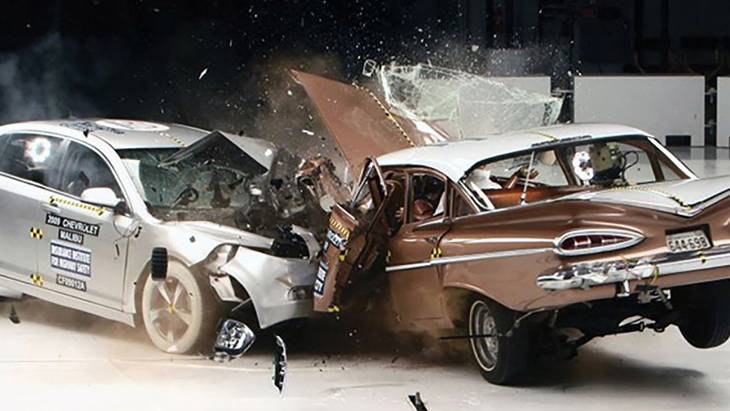Old vs new: Never-ending car-nversation

The old vs new discussion is probably as old as life. The tendency to give the past more meaning, depth. It’s perhaps not strange, since we are more familiar with it – ‘the devil you know’ scenario.
The discussion is useful, however, because by looking at the present and the past, we can carve out the future with relative accuracy. As an example, accident records such as number and type of cars against the nature and effects of the accidents lead to changes down the road – at least it does in a working system.
Here are a few areas that highlight differences between old and newer cars.
Safety
Modern cars are without a doubt, the safest we have ever had. Some people have it that the less the damage a car seems to have taken, the safer it is, whilst the reality is the opposite.
A modern car is designed to soak up a lot more energy to protect the passengers, which means a lot of bent metal in a collision.
Convenience
Another contrast is in the interior. Older cars have the radio, air-con and such systems as independent entities. Newer cars have everything on the touch screen, a seemingly integrated unit. When the touch screen fails, you lose all your essentials. This is just one example where the pursuit of efficiency can prove inconvenient. Winding up a window isn’t that bad after all.
The same simplicity in older cars proves a benefit when it comes to repair and maintenance. It is a lot easier to work on older cars. Even with modern diagnostic machines, trouble-shooting a car nowadays is so difficult, most people have to seek specialists.
Performance and driving experience
Cars are quicker now, but not necessarily more enjoyable to drive. I recently drove an ‘M’ BMW with 500hp and I can confidently say it’s not any more fun to drive than a 250hp Mitsubishi Evolution IV from the 90s.
Newer cars have gained weight in pursuit of safety and comfort and lost every ounce of soul. However, it’s difficult to choose between the two.
Always will be.
By Mayfellow Waithaka.











